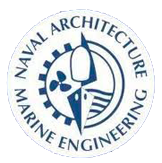Why PSP?
Discussion of Alternatives
In the early stages of this project a thorough review of existing multi-use floating offshore platform concepts was carried out. Within the EU there are ongoing research projects – ORECCA and Marina – that aim to:
“Promote knowledge sharing and to develop a roadmap for research activities in the context of offshore renewable energy” [1].
One of the most promising concepts for capturing wind and wave it the Floating Power Plant called Poseidon which has shown promising results using a full-scale prototype in real conditions. However, these platforms are not truly multi-purpose as they have no accommodation or additional uses, solely energy capture. As such, currently no multi-use concepts have achieved the transition from the concept design stage to construction or operation.
Numerous designs and concepts have been proposed, many showing clever and creative ideas. One such design is the Offshore Ocean Energy System developed by Float Incorporated which combines the Pneumatically Stabilised Platform and L-Shaped Oscillating Water Column wave energy collectors in one floating platform. An additional benefit of this design was the existing link between Alasdair and Float as a result of previous research.
However, the first stage of the project was devoted to assessing the various options before selecting the preferred concept. The main alternative concept was based on using a Semi-Submersible platform, as they have a long, proven track record in the marine sectors, in particular oil & gas.
PSP vs Semi- Sub
As mentioned, Semi- Submersible platforms have been used widely in the Oil and Gas industry for over 50 years [2]. The designs are well understood and there is a significant body of research investigating the structural, hydrodynamic and hydrostatic characteristics. However, the PSP was chosen as the preferred design for a number of reasons:
In addition, while the PSP has theory has been researched [2] and scale testing has been carried out [3] the concept has not been tested in full scale, allowing more scope for further analysis and research.
The main technical difference between the types of platform is the way the required buoyancy force is achieved. Semi-submersibles have a large, water-tight pontoons under the water plane which provide buoyancy and some degree of motion attenuation compared to the incoming waves. It is less affected by wave loading than a normal ship because its hull is submerged at a deep draft. However the Semi-Submersible is affected much by changes in loads due to the small available water plane [3].
In contrast, the PSP is constructed from an array of long vertical cylinders which are closed at the top but open to the sea at the bottom. With its innovative design the PSP type takes the buoyancy and the stability needed in a whole different way. Pressurised air is trapped at the upper of the cylinders area and water at their bottom, and it is this combination of trapped air and water that provides the required buoyancy [2].
Figure 1. PSP cylinder array
Benefits of PSP - Stability & Concrete
Stability
As incident waves reach the front edge of the platform, they compress air in the open bottom cylinder and cause pressure differentials between adjacent cylinders. The cylinders are interconnected with ports and valves which control the flow of air from one cylinder to the next, dissipating energy from the flow as it passes. This movement of air and dissipation of energy are the fundamental actions that decouple the wave forces from the platform motion, and create the calm area in the lee side of the platform [4].
Figure 2. Wave Energy Assimilation
Concrete
Two materials are widely used in the marine and offshore industries: concrete and steel. Steel is used for construction of most ships and both fixed and floating offshore structures. Other materials such as aluminium and reinforced glass fibreglass are used, but generally only in small vessels. Steel is preferable for construction of both ships and offshore structures due to the ease of construction and strength. The behaviour and performance is well understood and has been proven over a number of years through both theoretical and empirical studies [5].
However, for very large floating structures, pre-stressed concrete has some advantages over steel:
The first concrete platform for the oil and gas industry installed in 1950 in the Gulf of Mexico. Since then, hundreds of offshore concrete platforms have been constructed all over the world. Even more clients prefer concrete for projects like concrete gravity base platforms and liquefied natural gas (LNG) offshore terminals [5].
Concrete as material in offshore industry has far fewer requirements in comparison with steel. It is almost maintenance free as it does not need painted regularly and is resistant to corrosion.
While the overall volume of concrete needed to support similar loads is greater than with steel, the cost is typically much cheaper. Concrete has better behaviour in movements, in fatigue resistance and its durability is excellent. An additional benefit of concrete is that they can carry very heavy topsides. For the above reasons a very long useful life can be achieved with an estimation of 50 years [5].
Go to Platform Design
References
[1] R. P. Fernander and MiguelLamasPardo, "Offshore concretestructures," Ocean Engineering, no. 58, pp. 304-316, 2013.
[2] K. Cheung, A. Phadke, D. Smith, S. Lee and L. Seidl, "Hydrodynamic response of a pneumatic floating," Ocean Engineering, no. 27, p. 1407–1440, 2000.
[3] tmp2.wikia.com, 8/4/2106. [Online]. Available: http://tmp2.wikia.com/wiki/Pneumatically_Stabilized_Platforms_-_PSP.
[4] E. A. Pedersen, "Motion analysis of Semi-Submersible," 8/4/2016. [Online]. Available: http://www.diva-portal.org/smash/get/diva2:567040/FULLTEXT01.pdf. [Accessed 6 2012].
[5] Orecca Project , "ORECCA," 2013. [Online]. Available: http://www.orecca.eu/. [Accessed January 2016].

